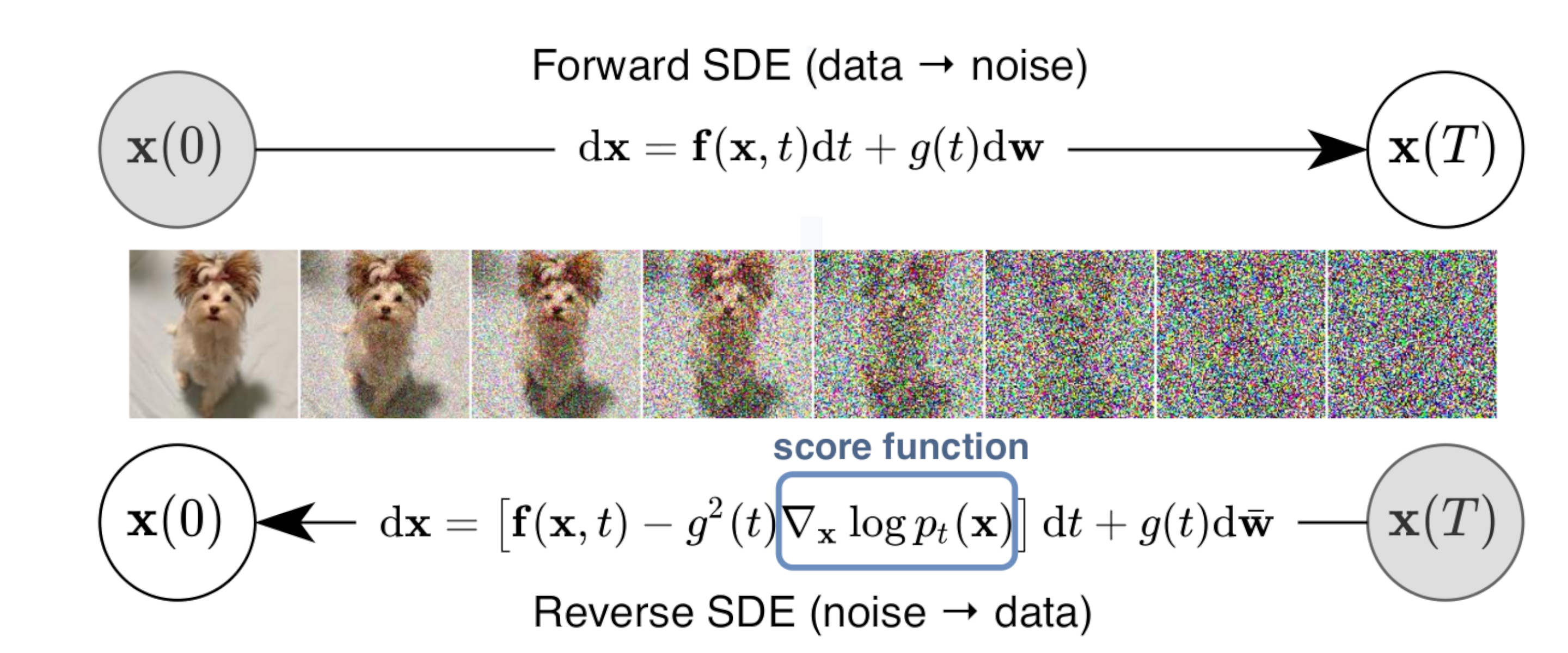Mining information using generative models
## Outline - Diffusion models - Overview of distillation techniques - ## {.smaller} ### Objective: Regularization of maps {.smaller} How can we regularize maps between shapes in a efficient, data-driven way? ; ## Background: Functional maps {.smaller} Let $M$, $N$ two shapes. We aim to find a pointwise map $T : M \to N$ The idea is to represent the map as a map $T_F$ between function spaces $\mathcal{F}(M, \mathbb{R}) \to \mathcal{F}(N, \mathbb{R})$, such that for $f: M \to \mathbb{R}$, the corresponding function is $g = f \circ T^{-1}$. It can be shown that this map is linear. We usually represent it as a mapping matrix C between basis function (Laplace Beltrami eigenfunctions) on M and N (note: a mapping matrix $C$ does not necessarily correspond to a pointwise map). The pointwise map is then extracted from the mapping matrix. ## Background: Functional maps {.smaller .scrollable .nostretch} Let's have two shapes that we wan't to match. The natural basis functions to choose are the Laplace Beltrami Operator (LBO) eigenfunctions. Now, suppose, we know a way to define a set of functions $f_i$ on $N$ and $g_j$ on $M$ such that $g(x) \sim f \circ T^{-1} (x)$ (local descriptors which are isometry invariant). We decompose all $f_i$ as $a \in \mathbb{R}^{n \times m}$ and $g_j$ as $b \in \mathbb{R}^{n \times m}$. The functional map can be defined as the solution of: $$ C = \underset{C}{\text{argmin}} ||Ca - b||² $$ In practice, we compute the pointwise descriptors using a neural network. Since the output of the previous equation can be obtained in closed form, we optimize the output $C$ with respect to the ground truth map $C_{gt}$ or with axiomatic constraints, allowing to learn the descriptors. {width=600} ## New problem How can we regularize functional maps in a efficient, data-driven way? ; ## Idea: data-driven shape matching {.smaller} We have access to huge datasets of **registered** non rigid shapes nowadays.  We can extract the ground truth functional maps to devise a desired structure of maps. ## ### Promising path: denoising diffusion models Denoising diffusion probabilistic models is currently the "best" way to learn a data distribution (at least on images).  ## Functional map diffusion model {.smaller} We now train a functional map diffusion model  ## Some generated maps  ## {.smaller} ### Straightforward approach: Score distillation for functional map regularization. Quick reminder of the original SDS loss. We have a differentiable way of parameterizing an image $I$ by some parameters $\theta$ (NeRF parameters) The gradient update of the parameters is given by $$ \nabla \mathcal{L}_{\text{SDS}}(x = g(\theta)) = \mathbb{E}_{t, \epsilon} \left[ \left(\hat{\epsilon}_{\phi}(x_t, t) - \epsilon\right) \frac{dx}{d\theta}\right] $$ Assuming we can define a way of defining the target map $C$ by some differentiable parameters (FMreg), we can optimize for $C$ using a fmap diffusion model SDS! ## Problem: sign ambiguity  ## Problem: sign ambiguity  ## Problem: sign ambiguity {.scrollable}  The map on the left is identified as a good map, and changing the sign is too costly!  ## Simple strategy We train now a model on "absolute" functional maps $|C|$, and use the corresponding SDS ((+ some other techniques of distillation)  ## Results Shape Nonrigid Kinematice (SNK, NIPS 2023) is a state of the art method for zero shot shape matching.  ## Takeaways - Yes, diffusion models captures some desired structure of functional maps, and can be used to regularize them - Sign ambiguity is an important problem to tackle ## Our project: Compositionality of maps { width=50% } ## Discussion/Thoughts - No work, or little, ha been done on differentiations this way (except in the seminal paper "Shape Differences, 2013") - Sign ambiguity will be a problem, but absolute maps have no compositionality - The adjoint operator $C C^T$, does not have sign ambiguity, and has been studied in "Shape Differences, 2013" ## More Discussion A potential easy application is motion registration: 